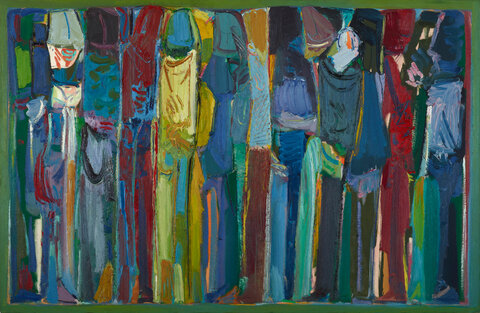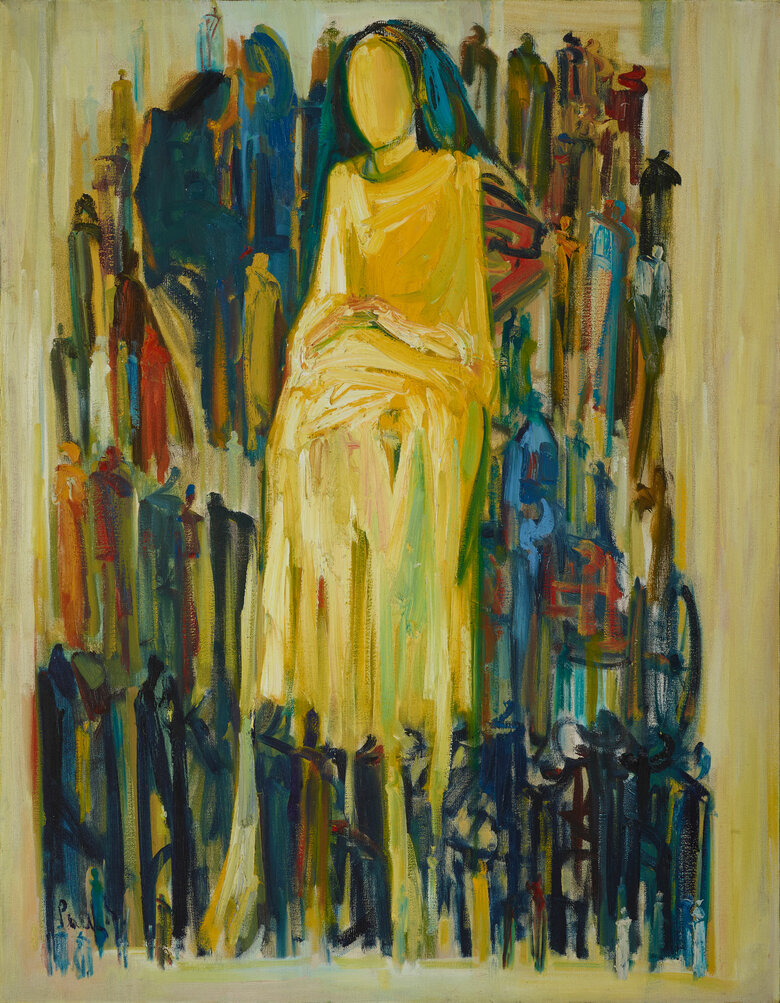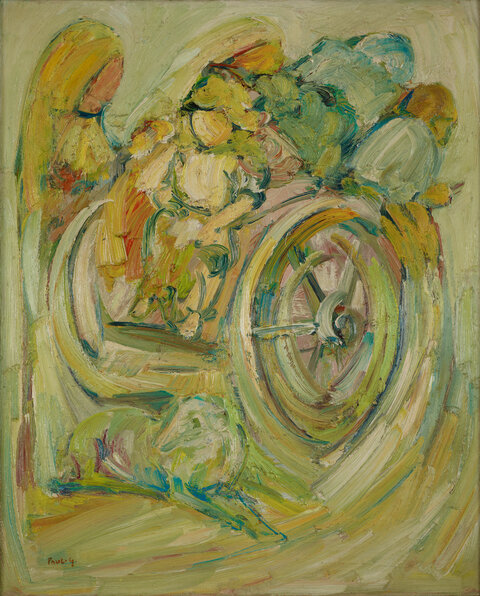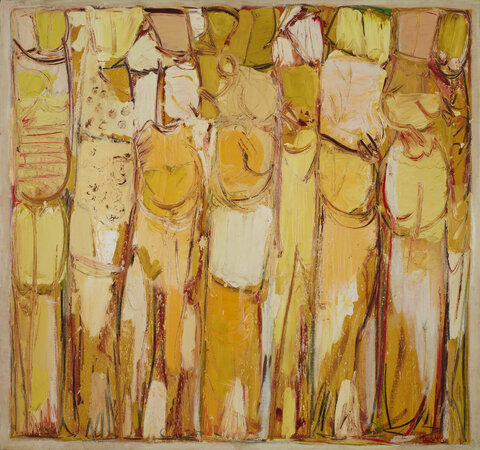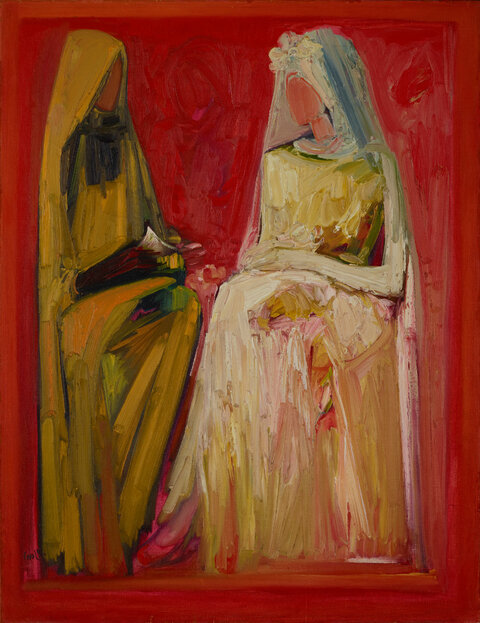In La Lutte de l’Existence, 1988, Paul Guiragossian depicts several erect human figures huddled together in a horizontal composition. The faceless figures, bursting with an array of warm and cool tones, congregate closely together, filling the entire frame of the large canvas. They appear elongated and slender, carrying no intricate details, almost ghost-like in their fluidity. Their garments are highlighted with striking brushstrokes that separate one figure from the other.
This artwork is the epitome of Guiragossian’s life experiences. He was born in Jerusalem to Armenian parents who survived the 1915 Armenian genocide. Yet, Guiragossian grew up in orphanages in his early years, finally settling in Lebanon. There too, bloodshed raged for over a decade, marking his memories and his artwork.
La Lutte de l’Existence was painted during the Lebanese civil war when Beirut was at the epicenter of violent confrontations. The title aptly translates to 'the struggle of existence. The painting is a testament to Guiragossian's unwavering commitment to portraying the human condition. The figures’ heads, slightly bowed, signal resignation or mourning. Their exaggerated proximity creates a grim, almost claustrophobic mood for the observer. The somber color palette of dark blues and reds is also characteristic of Guiragossian’s work, further exacerbating the painting’s morose tone.
Guiragossian’s talent is in his gestural brushstrokes, conveying powerful presence and loud emotions. Straddling the line between figurative and abstract art, he uses wispy, broad strokes to delineate the human form. The faceless figures seem to be painted with a lighter color palette as we move away from the center toward the left side of the composition. The figure’s soft anonymity and faded appearance underscore their etherealness and fragility. Guiragossian's distinctive style reflects the "tragedy concerning the figure of man, the exhaustion, the disintegration, and the destruction," as the artist himself explains. It is as if to remind viewers of our unity despite our struggles. The figures’ facelessness, as mentioned above, reflects their relatable universality: they could be anyone.
Paradoxically, the subjects’ subdued physical characteristics only enhance their strong presence. Indeed, the lack of negative space between and around them gives an overwhelming weight to the group. A harmonious compositional flow is attained through the figures' similar heights and forms. Contrasting hues of indigo-blue and orange separate adjoining figures, creating a well-demarcated contour outlining each one. The viewer can clearly point out where one figure ends, and the other begins, emphasizing the uniqueness of individual human experience, over and above its collective counterparts.
The imagery formed from the gathered figures is a subtle reminder of our divine nature as it resonates with the iconographic representation of Christ’s apostles commonly found across the Salesian churches of Palestine. La Lutte de l’Existence represents the tragedy of the human condition. Yet, it also hints at our togetherness. As such, the painting transcends the cathartic expression of one artist’s individual struggles to the expression of a universal truth about mankind.


